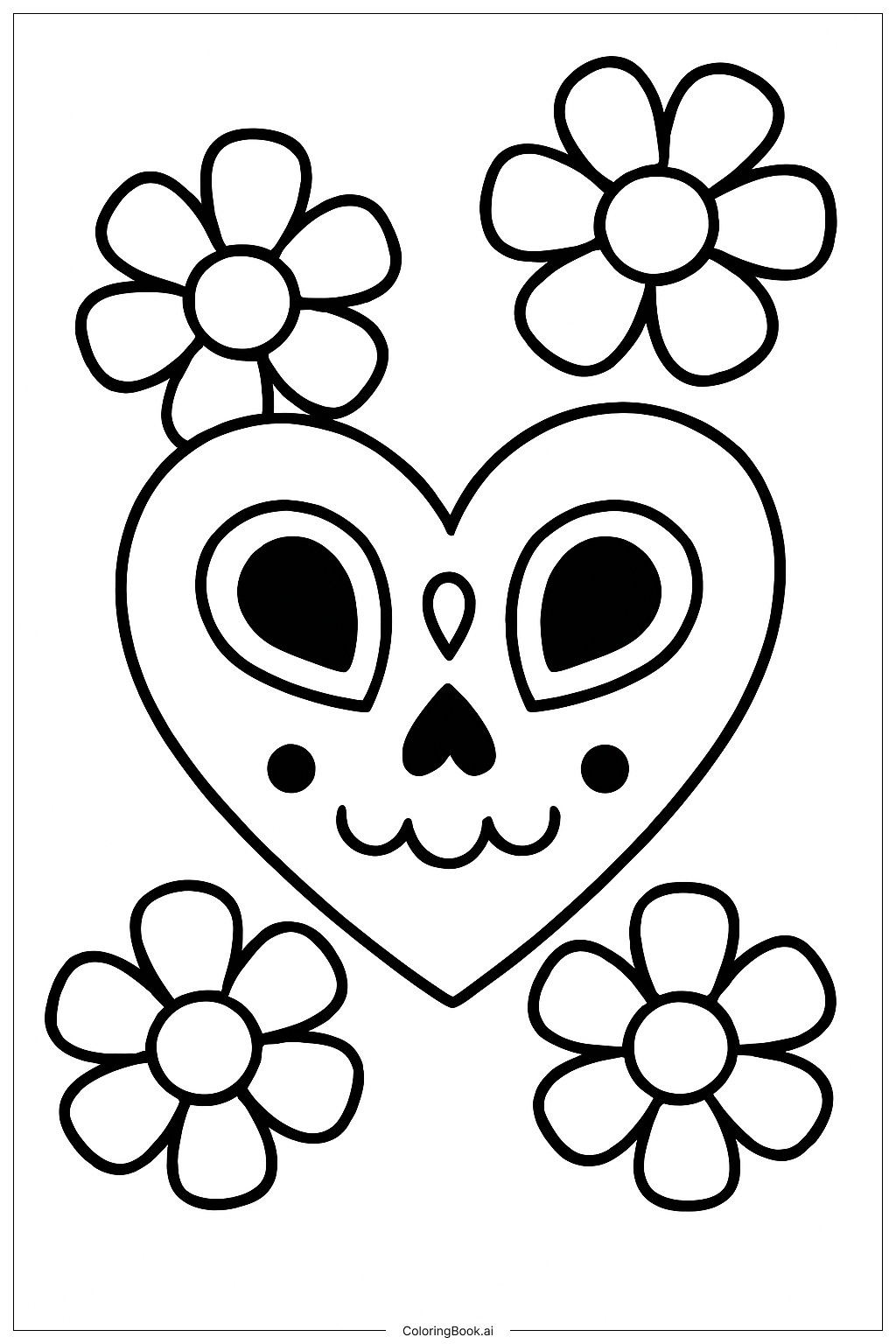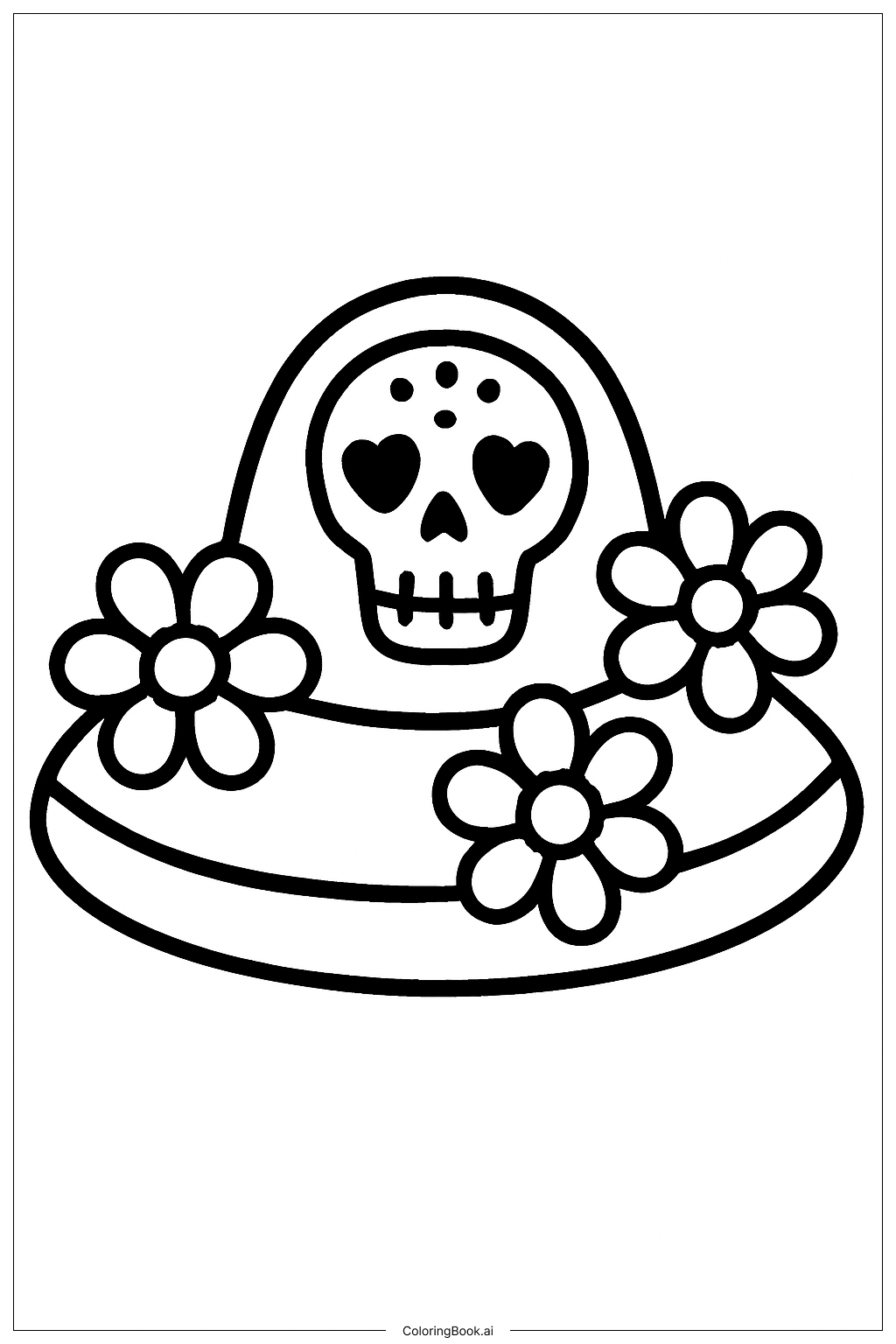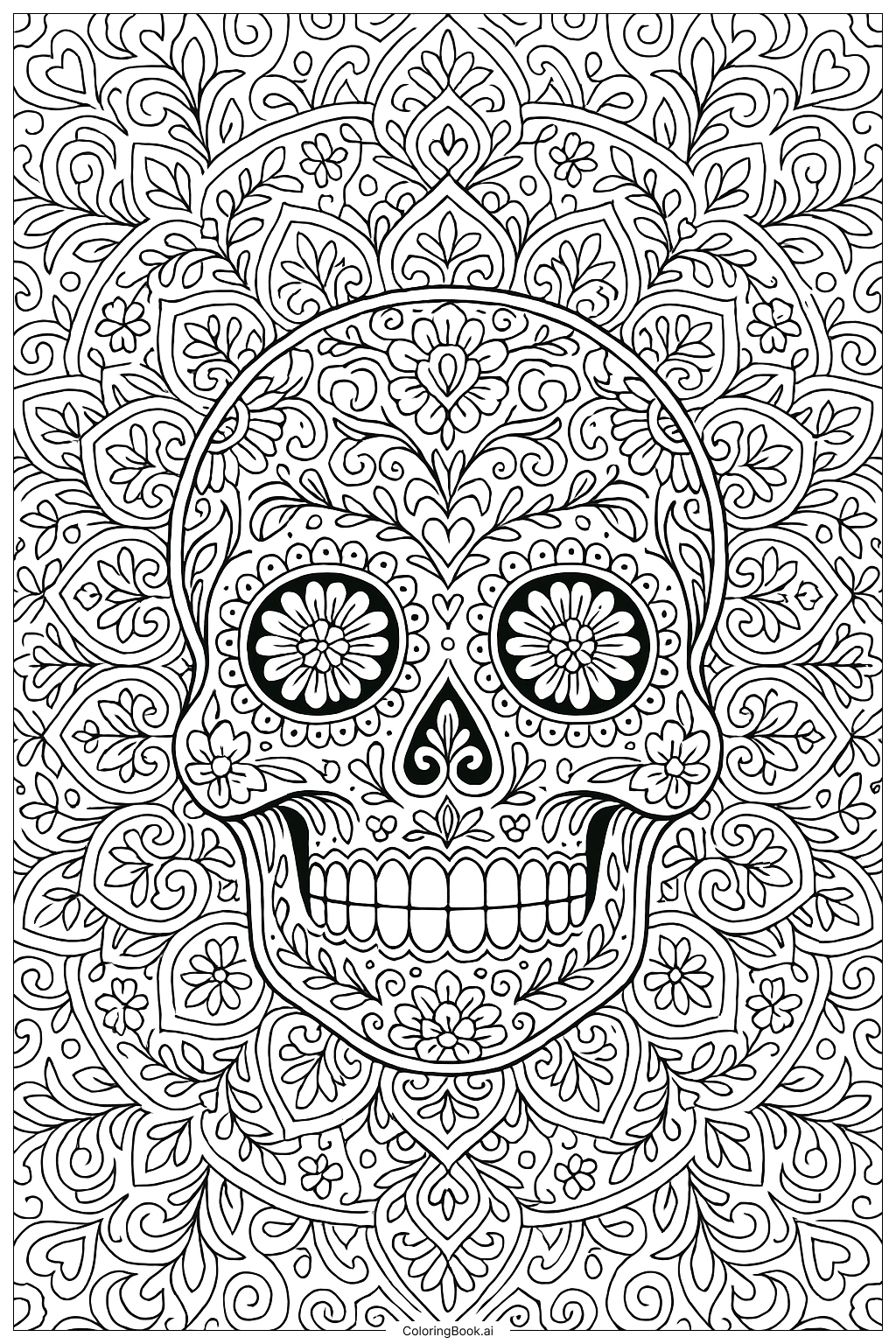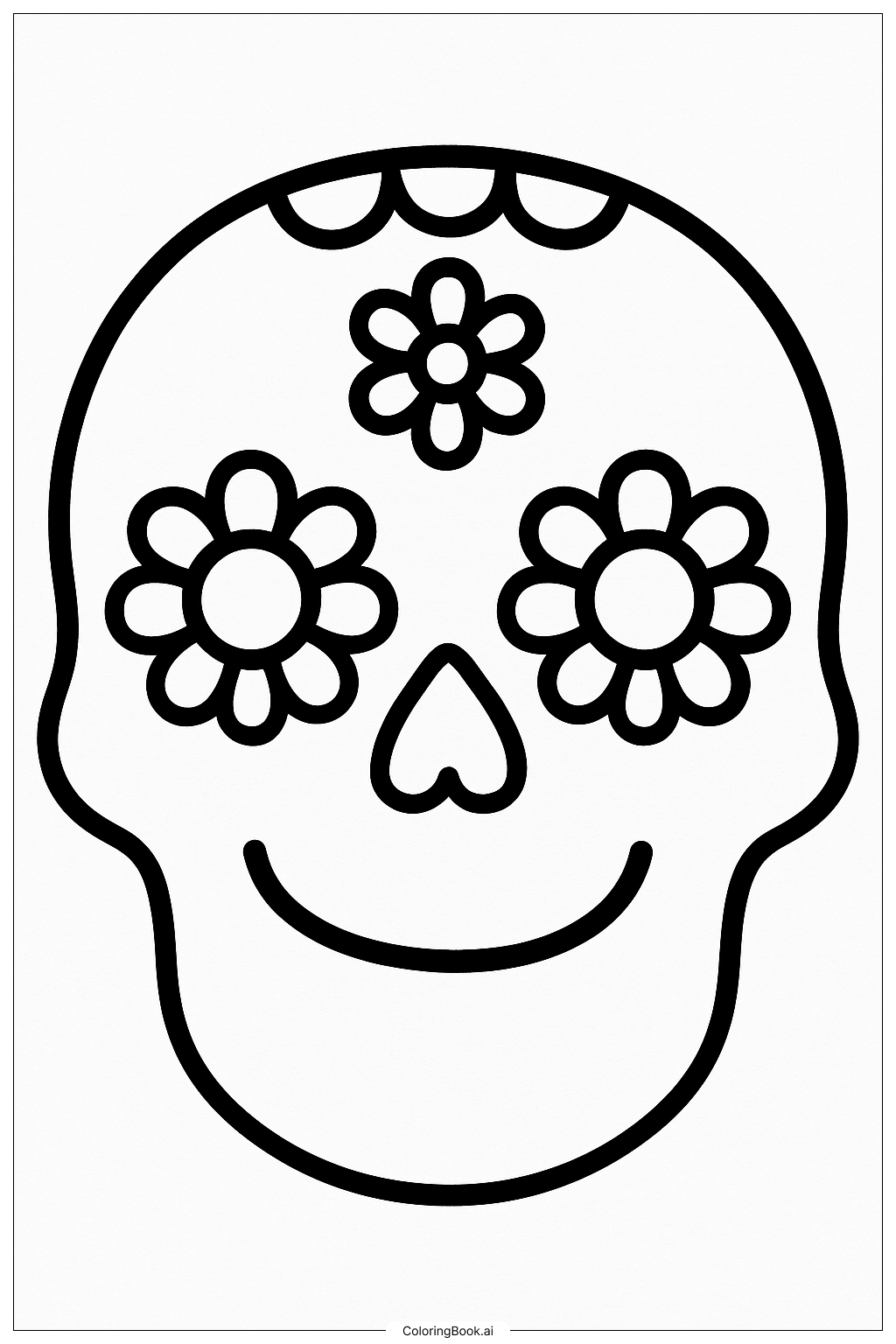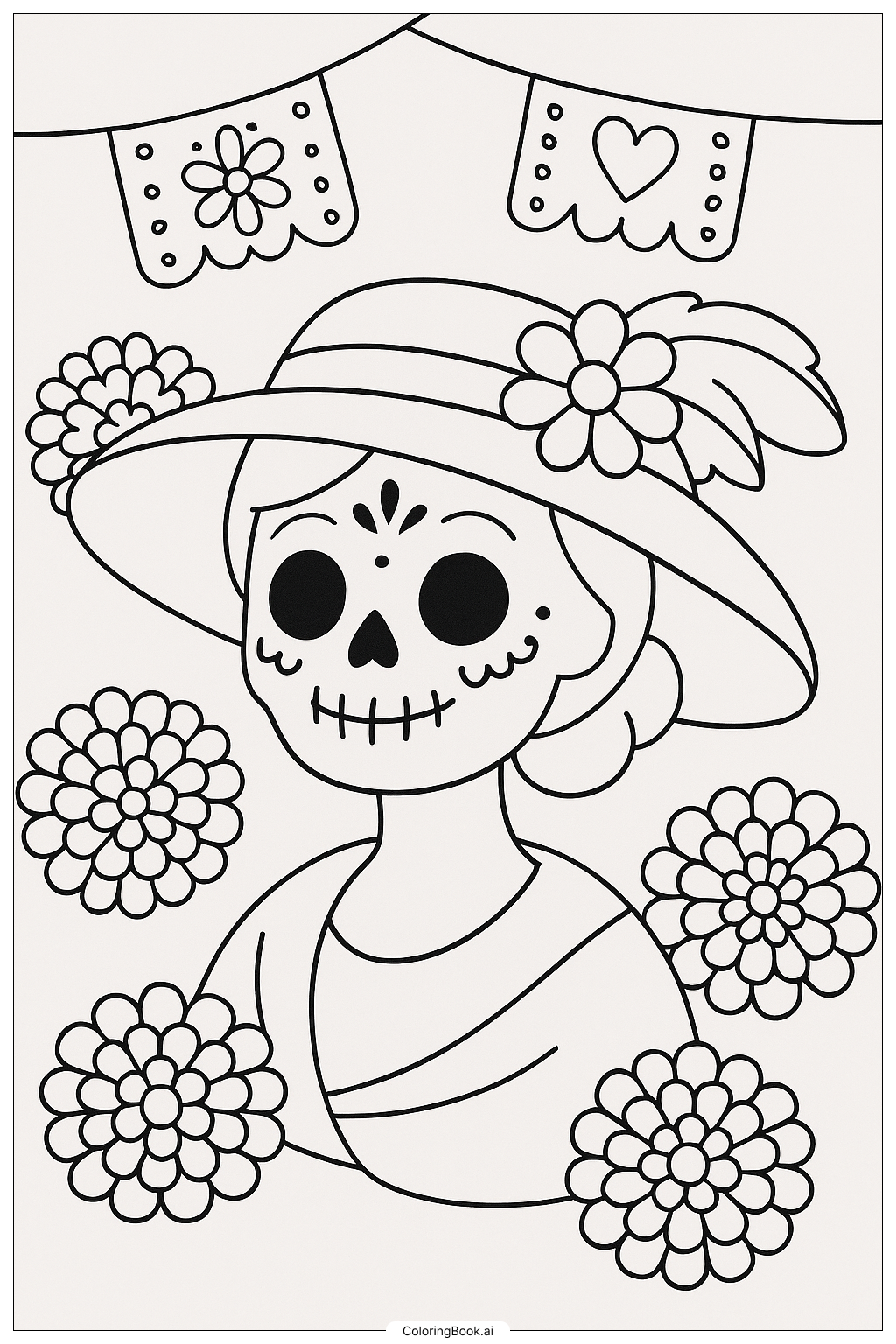Coloring tips: How to color Day of the Dead Heart With Flowers coloring page well?
Use bright and happy colors for this picture. You can color the heart with reds, pinks, or purples to make it lively. The flowers can be colored in yellows, oranges, blues, or any colors you like to create a colorful frame around the heart. For the eyes and nose, try using bold black or dark colors to make them stand out. You can also add patterns or dots on the petals to make it more fun. Use crayons, markers, or colored pencils to fill in the spaces carefully. Don’t be afraid to mix colors to make it unique and beautiful.
Coloring challenges: Which parts are difficult to color and need attention for Day of the Dead Heart With Flowers coloring page?
1. Coloring Inside the Lines: The lines are thick but small spaces exist around the eyes and nose, so staying inside the lines here can be tricky for younger children.
2. Filling Large Areas: The heart and flowers have big spaces that need even coloring without white spots, which requires patience and control.
3. Choosing Colors: Picking colors that look good together can be hard, especially when coloring many flowers.
4. Adding Patterns: If children want to decorate petals or the heart with patterns, it can be difficult to keep the patterns neat and small.
5. Contrast Balance: Balancing dark areas like eyes and nose with bright colors elsewhere can be a challenge to make the picture visually pleasing.
Benefits of coloring books: Advantages of drawing Day of the Dead Heart With Flowers coloring page
Coloring this picture helps kids improve their hand-eye coordination and fine motor skills by controlling their coloring tools. It also encourages creativity as children decide what colors to use and how to decorate the flowers and heart. This activity teaches patience and concentration, especially when coloring inside the lines and filling big spaces evenly. Coloring festive designs from the Day of the Dead also helps kids learn about different cultures and the importance of remembering loved ones. Overall, it is a fun and educational way to practice art and cultural knowledge.
